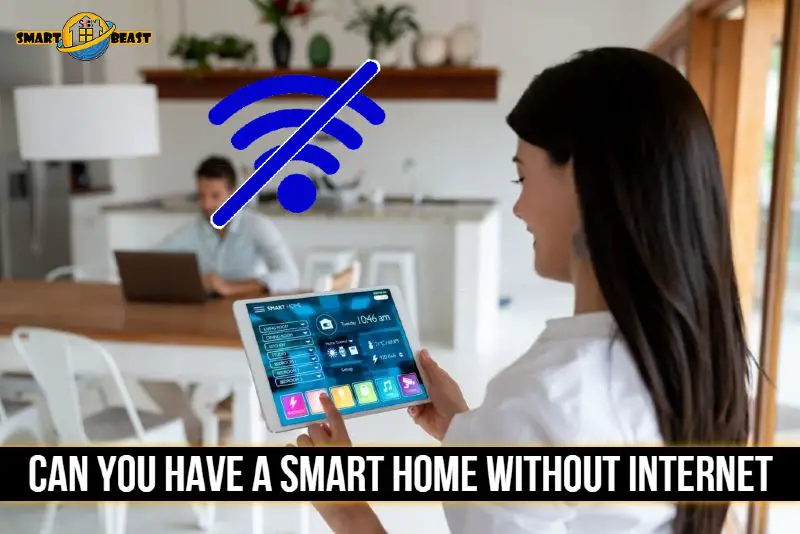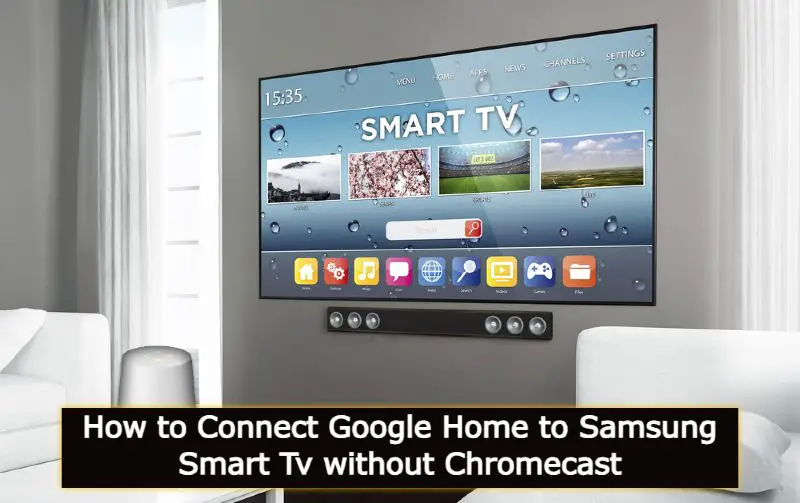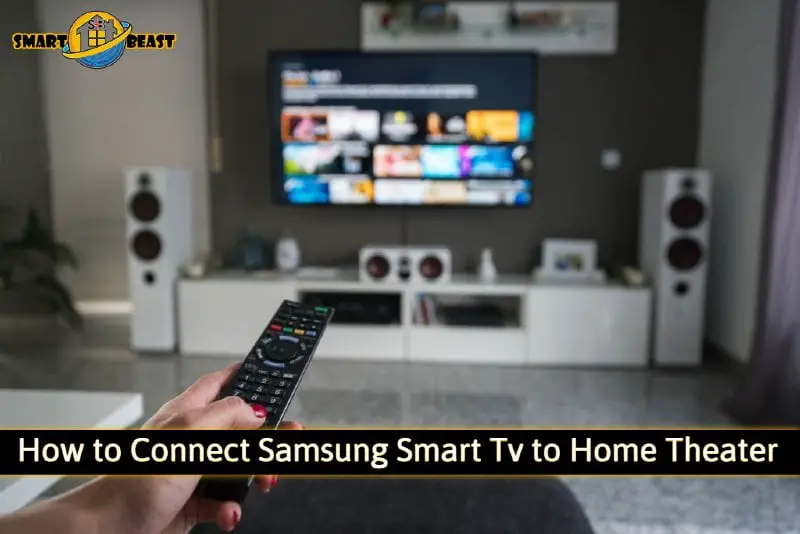
Smart home gadgets are on the rise, but many of them require an internet connection to function. So are there any benefits to having smart home tech without internet access?
The rise of the smart home is upon us. Home automation and the Internet of Things have become a reality, and it’s not just for techies anymore. Now you can control everything from your thermostat to your front door with a few taps on your smartphone or tablet. But what happens if you don’t have an internet connection?
A smart home is in the future of a lot of people. With voice-activated assistants, sensors, and security cameras that allow you to control your home from anywhere, it’s not hard to see why. But, if you don’t have internet access at home, can you still enjoy the benefits of a “smart” home? We look at some of the latest innovations in smart tech that work well without an internet connection.
What Does Smart Home Mean?
When we talk about smart homes, the term “smart” refers to a home that is connected to the internet. This connection allows you to remotely control all of your household appliances and systems wirelessly from your smartphone or tablet.
Controlling your home’s lighting, heating, AC, and other electronics with your phone or tablet is a great way to make your life easier. But how do you control these devices if you don’t have an internet connection at home?
Pros of having a smart home with internet
- A Smart Home with an internet connection allows you to control every aspect of your house remotely.
- You can turn on the AC or heat from anywhere in the world, view live streaming video from exterior cameras, and monitor your home via security surveillance software as well.
- With a smart thermostat, you can increase or decrease the temperature throughout the day without using a single drop of fuel.
- There are also smart locks to give you complete security and smart doorbells that will allow you to see who is at your front door – even if you aren’t home.
Cons of having a smart home with internet
Here are some disadvantages of a smart home with the internet:
- You need to have an internet connection to enjoy the benefits of a smart home. If you don’t have an internet connection, you’ll have to go back to manually operating your things.
- Smart home systems are connected to the internet, so their security is at risk if the internet is infiltrated by hackers. This can allow criminals to enter your home and gain access to personal information.
- If you live in a remote area that isn’t covered by an internet service provider, you won’t be able to enjoy the convenience of a smart home.
Smart Home without Internet, is it possible?
If you are interested in making your home smart but want the benefits without giving up control, there is another option. Some companies have created smart devices that operate independently of the internet. It is one of the best home automation ideas you can use to make your life easier. This gives you all of the great benefits of a connected home even if you don’t have an internet connection at your house.
How do they work?
They work by using radio signals to communicate wirelessly. These systems send information between the control panel and other components of your home automation system. Instead of sending data over a router, the control panel uses radio frequencies to communicate with sensors and other devices.
Smart tech that works well offline
There are several ways you can use smart tech independently of the internet. One of the most common is to connect a wireless control panel or hub with your home’s computer network and other devices.
The system uses radiofrequency (RF) technology to communicate between wireless devices that are connected, creating an instant network connection. All you have to do is scan for available networks on your laptop or mobile device, select the one that you want to use, and enter a password.
The network connection will then remain active for as long as your computer is on. All of your devices don’t have to be connected at all times; they can connect whenever they are needed.
You can also bridge two networks together using a wireless bridge. Simply connect the two networks together using a wireless bridge and then connect to each network through your laptop or mobile device.
Another advantage of having an independent, smart home is that you won’t have to worry about your data plan expires. You don’t need a Wi-Fi connection for it to work, so once you have set it up, there is little need to worry about using up your data.
Some Home Automation Systems Require no Internet Connectivity
How can you use smart technology without internet access? Any of the following examples will help you manage your simpler household tasks so that even if you don’t have an active internet connection, you can still use smart technology to control your home.
Here are few ways you can incorporate home automation into your life without the internet:
Use a Smartphone App
Some home automation app makers offer an option to store configurable settings within their apps so that you can access them even if you don’t have internet access. For example, the Nest app can store your heating and cooling settings so that you don’t have to input them manually.
Use Bluetooth Technology
Home automation devices often connect wirelessly to one another via Bluetooth for remote control purposes. For example, a smart thermostat like Ecobee’s HomeKit-connected device uses Bluetooth technology to connect with your iPhone or iPad.
Certain smart devices use Bluetooth Smart technology to connect to a central hub or other smart devices.
Smart home products that incorporate Bluetooth Smart technology can still be controlled when there is no internet connection.
The central hub or “middleman” is what holds all the devices together and keeps everything connected. Smart devices can communicate with each other if they’re close enough together (the range varies from device to device).
Build Local Smart Hubs
These bridge the gap between your various devices and allow you to control them from one central place. For example, if you have a Wink hub, you can control lights, thermostats, and more—all through the app on your phone. Smart hubs also allow you to schedule events and create rules for different devices to follow when certain things happen. For example, if the kids are coming home from school, then automatically turn on all of the lights in their favorite rooms.
Hubitat Hub for Smart Homes
You can also create your own smart home hub with a Hubitat. With Hubitat hub, you can control all the devices in your connected life from one place, as well as monitor and manage them for better performance and security. You have access to tons of customizable features to help you get started and build a system that works perfectly for you.
Use ZigBee or Z-Wave appliances for your Hubitat Hub
If you don’t have an internet connection or are looking for a simple and reliable solution for your home automation, then Hubitat also works with ZigBee or Z-Wave devices.
Hubitat kit can control up to 64 ZigBee or Z-Wave devices which is much more than what other smart home hubs offer. And they won’t disconnect during power outages or other Internet problems like some cloud-based systems do.
These devices communicate via radio frequencies instead of the internet.
The HomeKit in your Hubitat system is built around wireless mesh technology and doesn’t rely on an internet connection. That means you can control your home even when there is no active internet connection or in areas away from your router.
Hubitat allows you to create a smart home with or without an internet connection. It works locally and doesn’t depend on the cloud, so it doesn’t have any of its disadvantages.
How to connect Z-wave and ZigBee devices to the Hubitat hub?
Z-Wave- You can choose to add Z-Wave devices to your Hubitat network by adding a Z-wave controller node like the Wink 2 or Vera 3 Z-Wave Controller.
The ZigBee- Connect ZigBee devices to the Hubitat network via a dedicated wireless mesh node like Wink HUB.
Zigbee and Z-Wave are low-cost ways to control your home automation without the internet.
By using a smart hub with Z-Wave or ZigBee technology, you can control your entire home from anywhere, whether the internet is working or not.
With all of these options, you can ensure that your home automation hub is fully functional at all times.
Some people opt to purchase an inexpensive hub that supports both Zigbee and Z-wave and runs locally on their Wi-Fi network instead of through the internet. This way, all of their home automation appliances connect to that hub instead of directly to their Wi-Fi router. In addition, the local Zigbee or Z-wave networks allow customers to still use smart devices even when they don’t have an internet connection.
Products that don’t require an internet connection include:
- Wink Hub 2
- Philips Hue Smart Hub
- Nest, Ecobee, and Honeywell Smart Plugs
- TP Link, Belkin WeMo Door sensors
- Ring Video Doorbells
- Ring or SkyBell Outdoor Lighting
- LIFX and Sylvania Electric Blanket
Final Thoughts!
While the convenience of a connected and automated home is great, you don’t have to rely on the internet all the time for your devices to be helpful in everyday life!
You can have some benefits by having a smart home without an internet connection, but it’s definitely not the best way to go about it.
For those who live in remote areas or for people with limited internet access, having a “smart home” can seem impossible. However, the right devices and services can take your smart home to new heights without any connection at all.
You could have an internet-free smart home if you’d like, but it does mean that you’ll have to make some sacrifices in terms of the devices that you choose.







